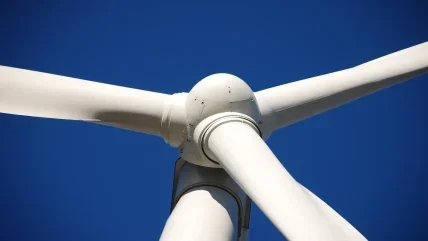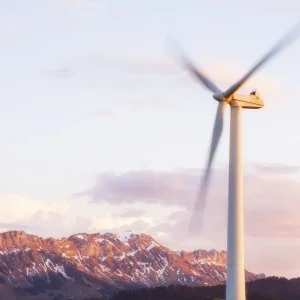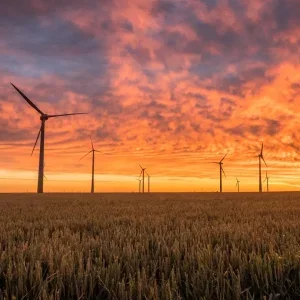
As the world continues its transition towards renewable energy, the wind technology industry remains a crucial player in the quest for sustainable and clean power sources. However, like all sectors, it is not immune to economic fluctuations, particularly inflation. This article delves into the relationship between inflation and the wind technology industry, exploring its effects, challenges, and potential opportunities for businesses within the sector.
Understanding Inflation and Its Economic Context
Inflation is the rate at which the general level of prices for goods and services rises, eroding purchasing power over time. Measured by various indices such as the Consumer Price Index (CPI) and the Producer Price Index (PPI), inflation impacts all economic sectors by influencing costs, pricing strategies, and consumer behaviour.
The causes of inflation are multifaceted, often stemming from increased demand, rising production costs, supply chain disruptions, or expansive monetary policies. In recent years, the global economy has faced inflationary pressures due to a combination of these factors, exacerbated by the COVID-19 pandemic, geopolitical tensions, and shifts in global trade dynamics.
The Wind Technology Industry: A Snapshot
The wind technology industry encompasses the design, manufacturing, installation, and maintenance of wind turbines and related infrastructure. As countries strive to meet their carbon reduction goals, the demand for wind energy has surged. According to the Global Wind Energy Council (GWEC), the world added 93 GW of new wind power capacity in 2020, a record increase despite the pandemic’s disruptions.
Inflation’s Impact on Wind Technology
- Rising Material Costs
One of the most immediate impacts of inflation on the wind technology industry is the increase in raw material costs. Wind turbines require significant amounts of steel, copper, rare earth metals, and other materials whose prices have surged in recent years. For instance, steel prices hit a record high in 2021, driven by supply chain bottlenecks and increased demand from multiple sectors.
These rising costs can squeeze profit margins for turbine manufacturers and project developers. Companies may be forced to either absorb these costs, which can be unsustainable in the long term, or pass them on to consumers, potentially slowing the adoption of wind energy due to higher project costs.
- Supply Chain Disruptions
Inflation is often accompanied by supply chain disruptions, which have been particularly pronounced during the pandemic. Delays in the production and delivery of critical components, such as turbine blades and electronic systems, can lead to project delays and increased costs.
For example, the wind technology industry relies on a global supply chain, with components sourced from various countries. Disruptions in any part of this chain, whether due to logistical challenges, trade restrictions, or increased transportation costs, can have a cascading effect on project timelines and budgets.
- Labour Costs and Skill Shortages
Inflationary pressures can also drive up labour costs. As the cost of living rises, workers demand higher wages to maintain their purchasing power. The wind technology industry, which requires skilled labour for installation and maintenance, may face increased payroll expenses.
Moreover, there is a growing concern about skill shortages in the renewable energy sector. The transition to a greener economy requires a workforce with specialised skills, and the current education and training systems may not be keeping pace with demand. This mismatch can further drive up labour costs as companies compete for a limited pool of qualified workers.
Strategies to Mitigate Inflationary Pressures
- Technological Innovation and Efficiency Improvements
One of the most effective ways for the wind technology industry to counteract inflationary pressures is through technological innovation and efficiency improvements. Advances in turbine design, materials science, and manufacturing processes can help reduce costs and improve performance.
For example, the development of larger, more efficient turbines can generate more electricity per unit, offsetting some of the increased costs of materials and labour. Additionally, improvements in predictive maintenance and remote monitoring technologies can reduce operational expenses and improve reliability.
- Diversification of Supply Chains
To mitigate the impact of supply chain disruptions, companies in the wind technology sector can diversify their supply chains. By sourcing components from multiple suppliers and regions, businesses can reduce their vulnerability to localised disruptions.
Furthermore, investing in local manufacturing capabilities can help reduce dependency on international supply chains. For instance, European companies have been exploring options to produce more wind turbine components domestically, reducing the risks associated with global trade uncertainties.
- Long-term Contracts and Financial Hedging
Long-term contracts with fixed pricing can provide a buffer against inflationary pressures. By locking in prices for materials, components, and labour, companies can achieve greater cost certainty and protect their margins.
Additionally, financial hedging instruments, such as futures contracts and options, can be used to manage exposure to volatile commodity prices. These financial tools can help companies stabilise their costs and plan more effectively for the future.
Opportunities Amidst Inflationary Challenges
While inflation presents significant challenges, it also creates opportunities for the wind technology industry. The increasing cost of traditional energy sources, driven by inflation, can enhance the competitiveness of wind energy. As fossil fuel prices rise, the relative cost advantage of wind power becomes more apparent, potentially accelerating the transition to renewable energy.
Government Policies and Support
Government policies play a crucial role in shaping the wind technology industry’s response to inflation. Supportive measures, such as subsidies, tax incentives, and favourable regulatory frameworks, can help offset some of the inflationary pressures and encourage continued investment in wind energy.
For instance, the European Union’s Green Deal aims to make Europe the first climate-neutral continent by 2050, with significant investments in renewable energy infrastructure. Similarly, the United States has introduced various incentives under the Inflation Reduction Act to promote the adoption of clean energy technologies.
Case Study: The United States Wind Energy Market
The United States, with its vast wind resources and supportive policies, serves as a relevant case study for examining the impact of inflation on the wind technology industry. According to the American Clean Power Association (ACP), wind energy accounted for nearly 8.4% of the country’s electricity generation in 2020, with significant growth expected in the coming years.
However, inflationary pressures have posed challenges for the U.S. wind market. Rising steel prices, supply chain disruptions, and increased labour costs have affected project economics. Despite these challenges, the sector has shown resilience, driven by technological advancements and supportive government policies.
Conclusion
Inflation presents both challenges and opportunities for the wind technology industry. Rising material costs, supply chain disruptions, and labour shortages can strain project economics and slow the adoption of wind energy. However, by leveraging technological innovation, diversifying supply chains, and employing financial hedging strategies, companies can mitigate these pressures and continue to thrive.
Moreover, inflation can enhance the competitiveness of wind energy as traditional energy prices rise, creating a favourable environment for renewable energy investment. Government policies and support mechanisms will be crucial in navigating these economic challenges and ensuring the continued growth of the wind technology industry.
As the world seeks sustainable solutions to meet its energy needs, the wind technology industry stands at the forefront of this transformation. By adapting to inflationary pressures and seizing the opportunities they present, the sector can continue to drive the global transition to clean and renewable energy.






